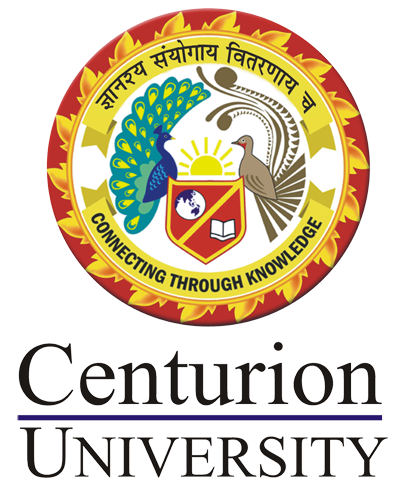per person /
Free
Machine Learning using Python
Course Attendees
Still no participant
Course Reviews
Still no reviews
Course Name : Machine Learning using Python
Code(Credit) : CUTM1019(1-2-1)
Course Objectives
-
Understand the meaning, purpose, scope, stages, applications, and effects of ML.
-
Explore important packages of python, such as numpy, scipy, OpenCV and scikit-learn.
Learning Outcomes
-
Students will able to Create and incorporate ML solutions in their respective fields of study.
Course Syllabus
Module 1 – Application and Environmental-setup (12 hrs)
-
Applications of Machine Learning In different fields (Medical science, Agriculture, Automobile, mining and many more).
-
Supervised vs Unsupervised Learning based on problem Definition.
-
Understanding the problem and its possible solutions using IRIS datasets.
-
Python libraries suitable for Machine Learning(numpy, scipy, scikit-learn, opencv)
-
Environmental setup and Installation of important libraries.
Module 2 - Regression (8 hrs)
-
Linear Regression
-
Non-linear Regression
-
Model Evaluation in Regression
-
Evaluation Metrics in Regression Models
-
Multiple Linear Regression
-
Feature Reduction using PCA
-
Implementation of regression model on IRIS datasets.
Module 3 - Classification (24 hrs)
-
Defining Classification Problem with IRIS datasets.
-
Mathematical formulation of K-Nearest Neighbour Algorithm for binary classification.
-
Implementation of K-Nearest Neighbour Algorithm using sci-kit learn.
-
Classification using Decision tree.
-
Construction of decision trees based on entropy.
-
Implementation of Decision Trees for Iris datasets .
-
Classification using Support Vector Machines.
-
SVM for Binary classification
-
Regulating different functional parameters of SVM using sci-kit learn.
-
SVM for multi class classification.
-
Implementation of SVM using Iris datasets .
-
Implementation of Model Evaluation Metrics using sci-kit learn and IRIS datasets.
Module 4 - Unsupervised Learning (12 hrs)
-
Defining clustering and its application in ML .
-
Mathematical formulation of K-Means Clustering.
-
Defining K value and its importance in K-Means Clustering.
-
Finding appropriate K value using elbow technique for a particular problem.
-
Implementation of K-Means clustering for IRIS datasets
Projects
-
To be defined based on respective study area of student.
References:
Text Book:
-
Ethem Alpaydin, Introduction to Machine Learning, Second Edition, http://mitpress.mit.edu/catalog/item/default.asp?ttype=2&tid=12012.
Web Resource:
-
https://towardsdatascience.com/beginners-guide-to-machine-learning-with-python-b9ff35bc9c51
Session Plan
Session-1
Applications of Machine Learning
https://www.youtube.com/watch?v=ahRcGObyEZo
https://www.slideshare.net/makabee/applications-of-machine-learning
Session-2,3
Supervised vs Unsupervised Learning based on problem Definition
Session-4,5
Understanding the problem and its possible solutions using IRIS datasets.
Session-6,7
Mathmatical library in Python numpy and its functions
Session-8,9
Science library in Python scipy and its functions
session-10,11
ML library in Python scikit-learn and its functions.
https://www.youtube.com/watch?v=bwZ3Qiuj3i8
https://scikit-learn.org/stable/tutorial/basic/tutorial.html
Session-12
Defining student specific Project
Session-20
Implementation of regression model on IRIS datasets.
Session-21
Defining Classification Problem with IRIS datasets.
Session-22,23
Create the train/test set using scikit-learn using scikit-learn
https://scikit-learn.org/stable/modules/generated/sklearn.model_selection.train_test_split.html
Session-24,25
Confussion Matrix, Accuraccy, Sensitivity, specificity
https://scikit-learn.org/stable/modules/generated/sklearn.metrics.confusion_matrix.html
Session-26
Mathematical formulation of K-Nearest Neighbour Algorithm for binary classification.
Session-27,28
Implementation of K-Nearest Neighbour Algorithm using sci-kit learn.
Session-31,32
Construction of decision trees based on entropy.
Session-33,34
Implementation of Decision Tree using sci-kit learn
Session-35,36
Classification using Support Vector Machines.
Session-39,40
Regulating different functional parameters of SVM using sci-kit learn.
Session-43,44
Implementation of Support Vector Machines.
Session-45,46
Defining clustering and its application in ML
Session-47,48
Mathematical formulation of K-Means Clustering.
Session-49,50
Defining K value and its importance in K-Means Clustering.
Session-51,52
Implementation of K-Means Clustering in Scikit-learn
Session-53,54
Finding appropriate K value using elbow technique for a particular problem.
Session-55,56
predicting iris flower species with k-means clustering.
https://medium.com/@belen.sanchez27/predicting-iris-flower-species-with-k-means-clustering-in-python-f6e46806aaee
Our Main Teachers

Dr. Sujata Chakravarty is a Senior Member of IEEE. Her research area includes multidisciplinary fields like Application of Computational Intelligence and Evolutionary Computing Techniques in the field of Financial Engineering, Bio-medical data classification, Smart Agriculture, Intrusion Detection System in Computer-Network, Analysis and prediction of different financial time series data. She is a reviewer of many […]


Recent Comments